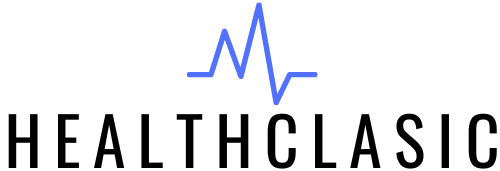Sterilization equipment plays a vital role in maintaining safety and hygiene standards in healthcare facilities. Proper sterilization of medical instruments and equipment is essential for preventing the spread of infections and ensuring patient safety. In this comprehensive guide, we will explore the importance of sterilization equipment in healthcare, its role in preventing infections, and the different types of sterilization methods used in medical facilities.
Importance of Sterilization Equipment
Sterilization equipment is essential for maintaining safety and hygiene in healthcare facilities. Proper sterilization of medical instruments and equipment helps prevent the transmission of infections between patients and healthcare workers. The importance of sterilization equipment in healthcare can be understood through the following points:
1. Preventing Infections:
- Sterilization equipment helps prevent the transmission of infectious agents such as bacteria, viruses, and fungi by ensuring that medical instruments and equipment are free from microorganisms before use on patients.
2. Ensuring Patient Safety:
- Sterilization equipment helps ensure the safety of patients by reducing the risk of healthcare-associated infections (HAIs) that can occur during medical procedures.
3. Protecting Healthcare Workers:
- Sterilization equipment protects healthcare workers from exposure to infectious agents by ensuring that medical instruments and equipment are free from contamination before use.
4. Maintaining Hygiene Standards:
- Sterilization equipment helps maintain hygiene standards in healthcare facilities by ensuring that medical instruments and equipment are clean and free from microorganisms.
5. Compliance with Regulations:
- Sterilization equipment helps healthcare facilities comply with regulations and guidelines set by regulatory authorities such as the Centers for Disease Control and Prevention (CDC) and the World Health Organization (WHO) regarding infection control and prevention.
Types of Sterilization Equipment
There are several types of sterilization equipment used in healthcare facilities, each employing different methods to sterilize medical instruments and equipment. Some common types of sterilization equipment include:
1. Autoclaves:
- Description: Autoclaves are devices that use steam under pressure to sterilize medical instruments and equipment.
- Function: Autoclaves use high temperature and pressure to kill or inactivate microorganisms, including bacteria, viruses, and fungi, ensuring that medical instruments and equipment are free from contamination.
2. Ethylene Oxide (EO) Sterilizers:
- Description: Ethylene oxide sterilizers use ethylene oxide gas to sterilize medical instruments and equipment that are heat-sensitive or cannot be sterilized by autoclaving.
- Function: Ethylene oxide gas penetrates the surface of medical instruments and equipment, killing or inactivating microorganisms, ensuring that they are free from contamination.
3. Hydrogen Peroxide Plasma Sterilizers:
- Description: Hydrogen peroxide plasma sterilizers use hydrogen peroxide gas plasma to sterilize medical instruments and equipment.
- Function: Hydrogen peroxide gas plasma penetrates the surface of medical instruments and equipment, killing or inactivating microorganisms, ensuring that they are free from contamination.
4. Ultraviolet (UV) Sterilizers:
- Description: UV sterilizers use ultraviolet light to sterilize air, surfaces, and water in healthcare facilities.
- Function: UV light kills or inactivates microorganisms, including bacteria, viruses, and fungi, ensuring that the environment in healthcare facilities is free from contamination.
5. Chemical Sterilizers:
- Description: Chemical sterilizers use liquid chemical agents such as glutaraldehyde, peracetic acid, and chlorine dioxide to sterilize medical instruments and equipment.
- Function: Chemical agents kill or inactivate microorganisms, ensuring that medical instruments and equipment are free from contamination.
Sterilization Process
The sterilization process involves several steps to ensure that medical instruments and equipment are properly sterilized and free from contamination. The steps in the sterilization process may vary depending on the type of sterilization equipment used, but typically include the following:
1. Cleaning:
- Before sterilization, medical instruments and equipment must be thoroughly cleaned to remove visible debris, blood, and other organic material.
2. Packaging:
- Cleaned medical instruments and equipment are then packaged in sterilization pouches or wraps to protect them from contamination during the sterilization process.
3. Sterilization:
- Packaged medical instruments and equipment are then placed in the sterilization equipment and subjected to the sterilization process, which may involve steam, gas, plasma, or chemical agents.
4. Monitoring:
- During the sterilization process, the sterilization equipment is monitored to ensure that the proper temperature, pressure, and exposure time are achieved to effectively sterilize the medical instruments and equipment.
5. Storage:
- Sterilized medical instruments and equipment are then stored in a clean, dry environment until they are needed for use.
Importance of Monitoring and Validation
Monitoring and validation of the sterilization process are essential for ensuring that medical instruments and equipment are properly sterilized and free from contamination. This involves:
1. Biological Monitoring:
- Biological monitoring involves using biological indicators such as spore strips or ampoules to test the effectiveness of the sterilization process.
- These indicators contain bacterial spores that are resistant to the sterilization process. If the sterilization process is effective, the spores will be killed, indicating that the process is working properly.
2. Chemical Monitoring:
- Chemical monitoring involves using chemical indicators such as tape, strips, or cards to monitor the temperature, pressure, and exposure time during the sterilization process.
- These indicators change color or display a visible change when the proper conditions for sterilization are met, providing a visual indication that the process is working properly.
Conclusion
Sterilization equipment plays a vital role in maintaining safety and hygiene standards in healthcare facilities. Proper sterilization of medical instruments and equipment is essential for preventing the transmission of infections and ensuring patient safety. Different types of sterilization equipment, including autoclaves, ethylene oxide sterilizers, hydrogen peroxide plasma sterilizers, UV sterilizers, and chemical sterilizers, are used to sterilize medical instruments and equipment using steam, gas, plasma, or chemical agents. The sterilization process involves several steps, including cleaning, packaging, sterilization, monitoring, and storage, to ensure that medical instruments and equipment are properly sterilized and free from contamination. Monitoring and validation of the sterilization process are essential for ensuring that medical instruments and equipment are properly sterilized and safe for use on patients. With proper sterilization equipment and protocols in place, healthcare facilities can maintain safety and hygiene standards and provide the highest level of care to their patients.
